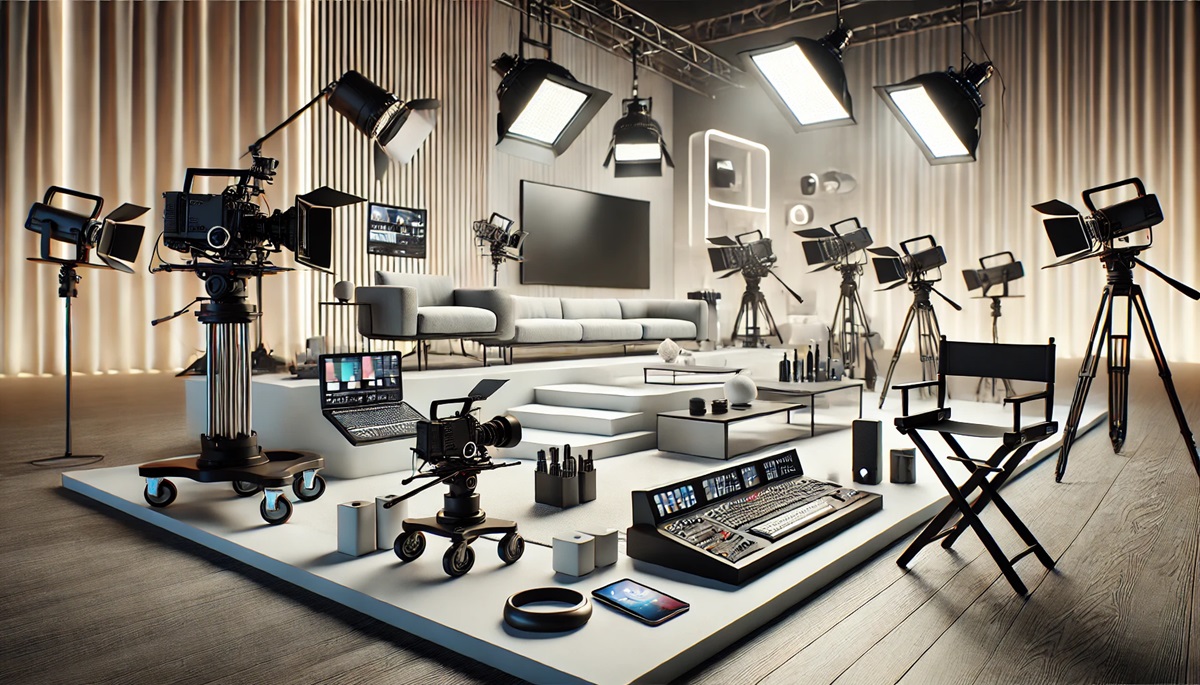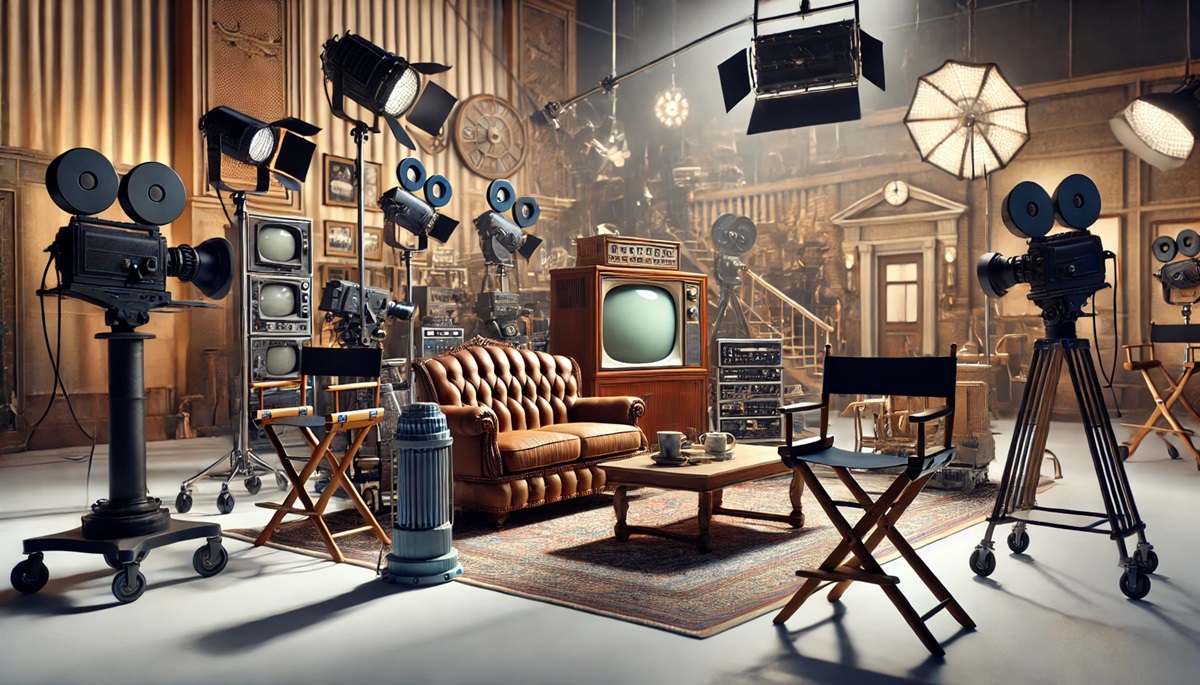The Power of TV Show Props: Crafting Iconic Worlds and Immersive Experiences
Television shows, while often focused on dialogue, plot, and character development, come to life through more than just these elements. TV show props are essential in helping create the world in which the story unfolds, providing visual depth and texture that enhance the narrative. From the coffee cup in “Friends” to the iconic weaponry in “Game of Thrones,” props are as integral to the success of a television series as the actors themselves. In this blog, we will dive into the pivotal role of props in TV shows, examining how they are created, their impact on character development, and how they help bring fictional worlds to life in ways that make them feel real and relatable to the audience.

Understanding the Role of Props in TV Shows: More Than Just Objects
TV show props serve a wide range of functions in television productions, going far beyond simple decoration. They are powerful storytelling tools that help to establish character, setting, and even theme. The use of props in television production involves intentional design, symbolic meaning, and even practical usage that moves the story forward. Here are some key ways in which props contribute to a television show’s success:
- Establishing Character Identity: Props are often used to define or add depth to a character’s identity. A character’s choice of possessions can say a lot about their personality, background, and current emotional state. For example, the weapons in “Breaking Bad” not only serve as tools of the drug trade but symbolize Walter White’s transformation into the notorious “Heisenberg.” Similarly, the key chain in “The Office” or Sherlock Holmes’s magnifying glass immediately establishes important traits about their characters. These items act as visual shorthand, immediately signaling to the audience something about who the character is or has become.
- Building the World: Props are essential for creating an authentic world for the characters to inhabit. Whether a futuristic city in “Black Mirror” or the cozy living room of “The Golden Girls,” props fill out the space, making the setting feel real and lived in. The details of the props can communicate a lot about the world in which the characters exist—like the technology in “Stranger Things,” which helps the audience understand the show’s blend of supernatural and ’80s nostalgia. These items root the show in a specific time, place, or culture, helping to immerse the audience in its environment.
- Conveying Themes and Symbolism: Props often carry symbolic weight that enhances the thematic elements of the story. For example, in “The Crown,” Queen Elizabeth II’s crown isn’t just a piece of jewelry—it’s a representation of her power, her burdens, and her identity as a monarch. Similarly, in “The Handmaid’s Tale,” the red dresses worn by the handmaids are a powerful symbol of both oppression and resistance. The use of such props often deepens the emotional resonance of the show’s central themes, making them visually memorable and thought-provoking for the audience.
- Creating Drama and Tension: Props can also play a crucial role in intensifying dramatic moments. From a broken mirror in a tense argument to a weapon that changes the trajectory of a storyline, props can elevate the stakes of a scene. In “Game of Thrones,” the Iron Throne isn’t just a seat of power—its sharp, uncomfortable design symbolizes the dangerous and bloody nature of the pursuit of the throne. It reflects the show’s exploration of power and its corrupting influence. Such props make the world more visceral, the conflict more palpable, and the stakes higher for the characters involved.
- Adding Visual Interest: Sometimes, props simply help create visual intrigue that complements the show’s aesthetic or style. The props in a show often contribute to its overall look and feel, from the sleek technology in a science fiction series to the vintage items in a period drama. Props like furniture, clothing, and accessories help to create a cohesive design that visually supports the show’s themes and tone. This can also include quirky or humorous props that add flavor to a show’s atmosphere, such as the many strange objects in “The X-Files,” which help establish the show’s surreal, mysterious feel.
The Creative Process of Designing TV Show Props: Bringing Ideas to Life
Designing props for a TV show is a highly creative and collaborative process that involves close coordination between multiple departments, including production design, costume design, and the direction team. The process starts long before the cameras roll and often involves detailed research, conceptualization, and construction. Here’s an overview of the steps typically involved in creating TV show props:
- Script Analysis and Research: The first step in designing props for a television show is a careful analysis of the script. Prop designers work closely with the director and production team to understand the needs of the scene, the story, and the characters. This may involve extensive research into the time period, the setting, or specific objects that need to appear on screen. For historical shows like “The Crown,” accuracy is essential, and designers spend significant time ensuring that props reflect the correct historical period. For fantasy or sci-fi shows, research may involve creating entirely new concepts, which requires creativity and imagination.
- Concept Design and Sketching: Once the research phase is complete, prop designers begin sketching ideas for each object, often working in collaboration with set designers and the director. The goal at this stage is to visually interpret how each prop will appear on screen, ensuring that it complements the aesthetic and style of the show. Designers create multiple variations for each prop, allowing the production team to select the best options. For example, in a show like “Stranger Things,” the look of the Demogorgon or the machines from the Upside Down would have involved several iterations of design before settling on the final form.
- Prototyping and Fabrication: After the concept has been approved, the prop-making team begins constructing the props. Depending on the complexity of the object, this may involve materials such as wood, metal, foam, or fabric. For props that need to be functional—such as a guitar in a musical or a weapon in an action scene—special attention is paid to how the prop will be used in performance. In some cases, prop makers may need to create multiple versions of the same object—such as multiple swords for fight scenes or several copies of a prop that will be used in different locations. Once the basic structure is built, the props are finished with painting, aging, and other detailing to give them the desired look.
- Integration with the Set and Actors: Prop designers then work with the set and costume departments to integrate props seamlessly into the show’s environment. The props need to be placed in their correct positions on set, ensuring that they look natural within the larger space. They also need to be easily accessible to the actors during rehearsals. Many props are carefully staged to ensure they align with the actor’s movements and the direction of the scene. Some props are intended to be interacted with or manipulated during the show, which requires close coordination with actors to ensure a fluid, believable performance.
- Revisions and On-Set Adjustments: Often, props need to be modified during filming to better suit the demands of a scene. This could involve adjustments to their size, color, or function based on the needs of the shot or the director’s vision. A prop might need to be more durable for certain scenes, or it may need to undergo alterations to fit a particular setting or time of day. This flexibility ensures that props contribute to the performance rather than distracting from it.
Iconic TV Show Props That Defined Pop Culture
Some props transcend their role in a particular show and become part of popular culture, leaving a lasting impression on audiences. These props often become symbols of the series and are instantly recognizable to fans. Here are a few iconic examples:
- The One Ring from “The Lord of the Rings”: The One Ring in Peter Jackson’s “The Lord of the Rings” franchise is perhaps one of the most iconic props in cinematic and television history. Its design, along with its mystical properties, serves as the central symbol of power and temptation in the story. The One Ring’s visual and thematic significance resonates with audiences, making it an enduring symbol of Tolkien’s work.
- The “Red Phone” in “24”: The red phone in “24,” used to communicate with the President during high-stakes national security crises, is symbolic of the urgency and gravity of the show’s plot. This prop is essential in heightening the tension and urgency, reflecting the time-sensitive nature of the series’ real-time format.
- The TARDIS in “Doctor Who”: The TARDIS, the time-traveling police box, is a symbol of “Doctor Who” and its ability to explore endless worlds and realities. Its iconic blue exterior and the unexpected revelation of its vast interior make it one of the most beloved props in TV history. It encapsulates the whimsical and adventurous spirit of the show.
- The “Friends” Coffee Cups: The iconic coffee cups from “Friends” have become symbolic of the camaraderie and comfort of the coffeehouse setting, Central Perk. These simple props became central to many of the show’s most memorable moments, contributing to the show’s warmth and relatability.
- Walter White’s Hat in “Breaking Bad”: Walter White’s signature Heisenberg hat in “Breaking Bad” became a key symbol of his transformation from a mild-mannered teacher to a drug kingpin. The hat is emblematic of his ego and descent into the criminal world, making it one of the most iconic props in modern television.
The Psychological Impact of TV Show Props on Audiences
TV show props do more than just support the narrative—they play a significant role in shaping the emotional experience of the audience. The psychology behind props is rooted in their ability to convey meaning, evoke memories, and create emotional responses. By strategically using props, shows can deepen the audience’s connection to the characters and the story, allowing viewers to engage with the narrative on a more personal level.



